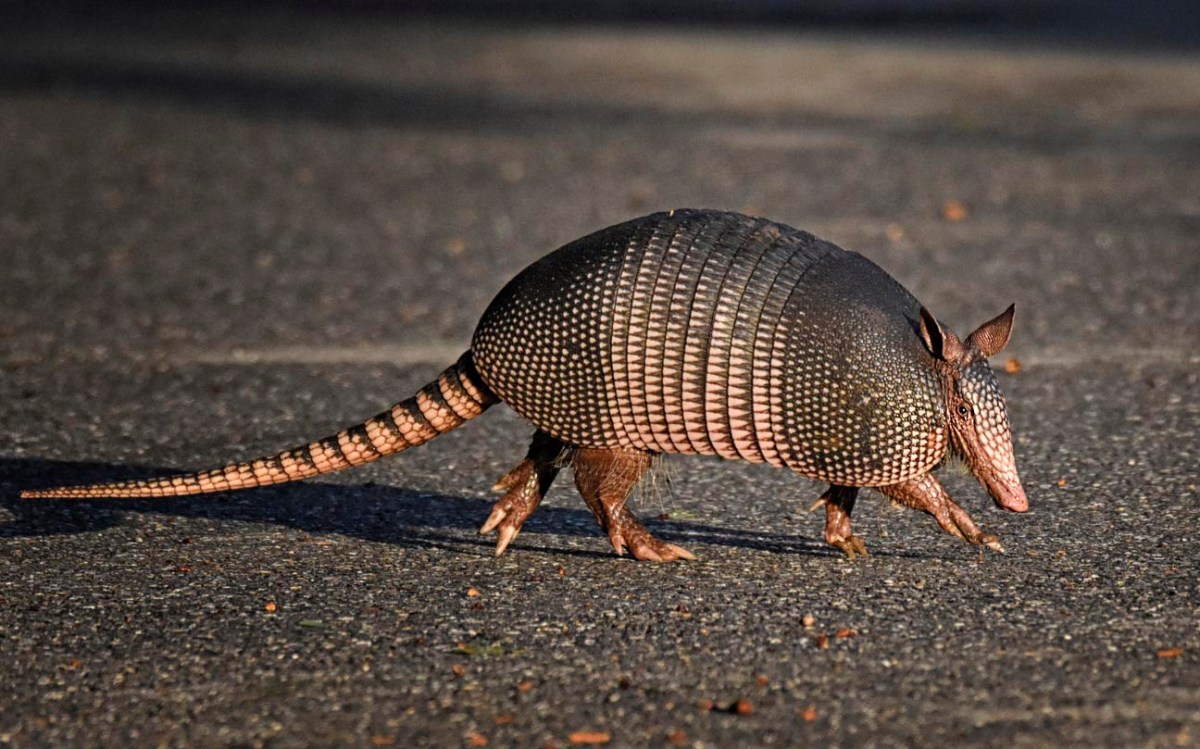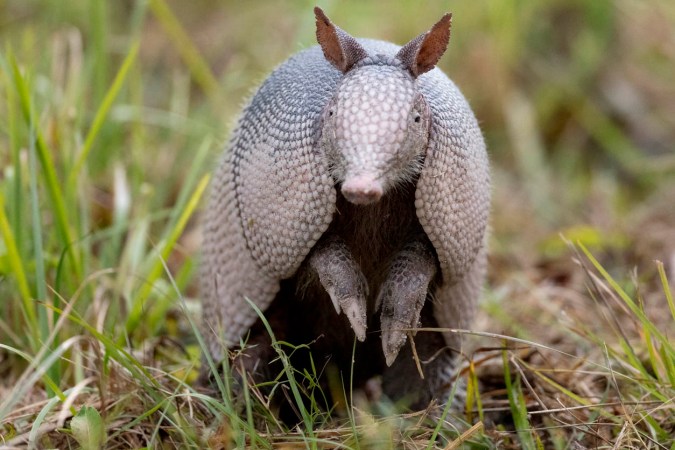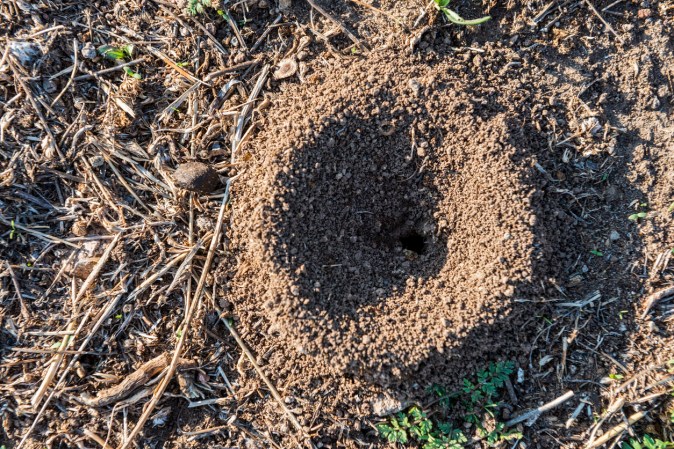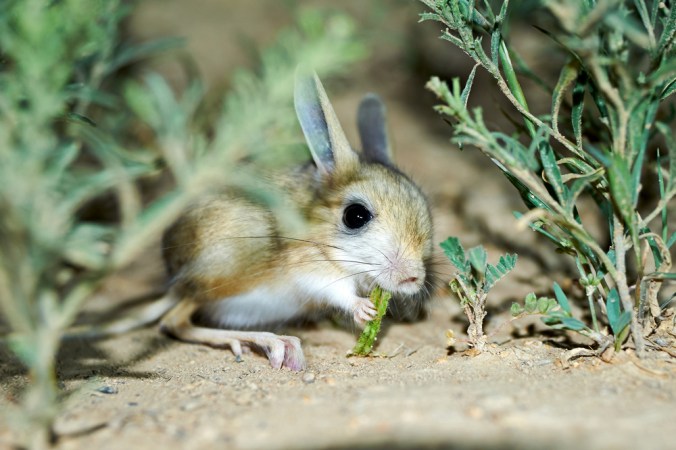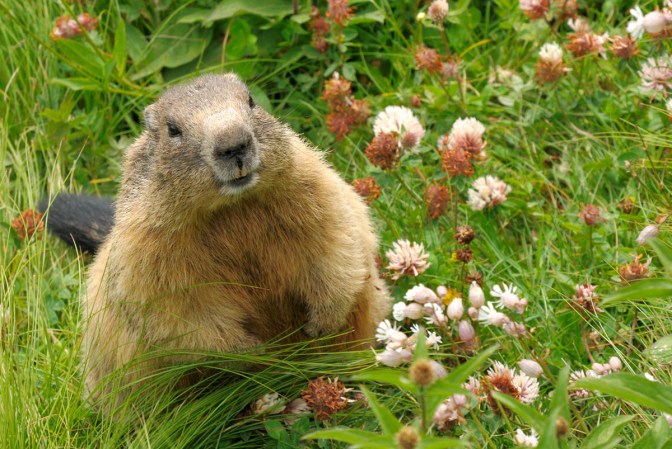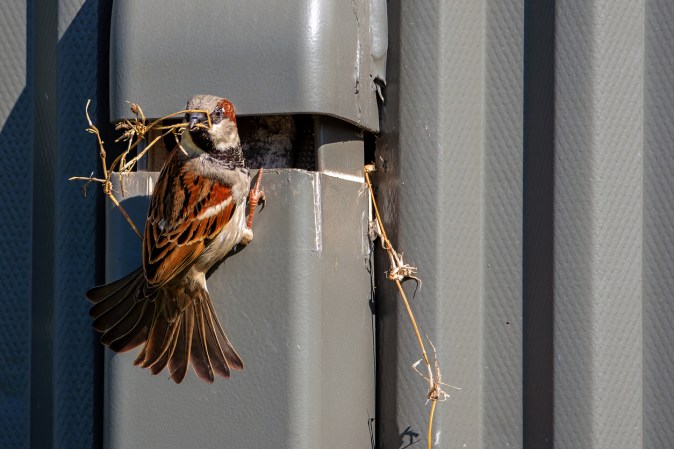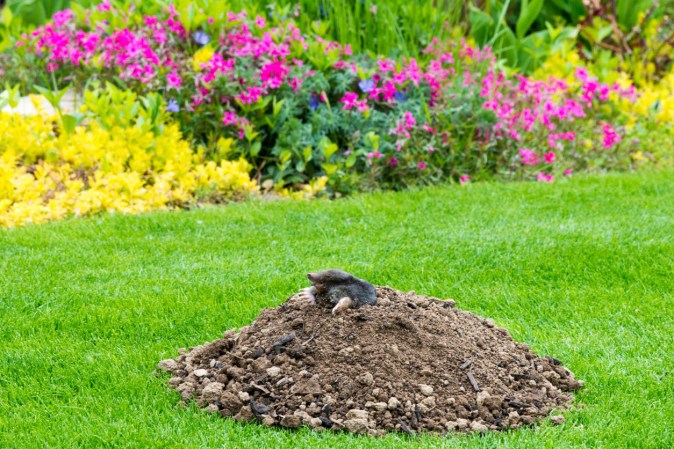We may earn revenue from the products available on this page and participate in affiliate programs. Learn More ›
The nine-banded armadillo is expanding its territory into parts of the country it has never been seen in before, taking everyone from wildlife experts to homeowners to pest and wildlife control services by surprise.
The mammal—known for its distinctive armor—is native to Central and South America, as well as parts of the Southwestern United States and Texas. However, in recent years it has been expanding its range as far north as Illinois and Nebraska, according to the National Wildlife Federation. These animals prefer warm, wet climates, which makes some of the most recent sightings head-scratching events: What are they doing outside of their typical habitat, where are they going, and what’s triggering this change? This animal’s evolving range isn’t as much of a mystery as it seems, but it carries some consequences for the environment.
To determine the popularity of pest and wildlife control services hired for armadillo issues, we reviewed how our readers have engaged with our content from January 2022 through October 2023. We defined “popularity” by focusing on topics with a higher-than-average number of readers, clicks to our vetted and recommended professionals, and even direct bookings made through our links. We also considered external official reports and studies.
Key Insights
- Nine-banded armadillos have been slowly expanding their range since the 1900s, but they have moved rapidly north to states such as Illinois, Missouri, and even Michigan in the past few decades.
- The climate is warming both in the armadillo’s typical habitat and north of that range, so armadillos are becoming more active earlier in the year in their typical habitat and expanding into places where summer temperatures match that of their preferred clime.
- According to BobVila.com data, the armadillo’s migration is reflected in readers’ reference of an article on getting rid of armadillos, as well as in requests for pest or wildlife control in states outside of the species’ range in 2023.
- Climate change leading to increasing temperatures and more food availability is thought to be the cause of this expansion, but the growing population is naturally seeking territory with less mating competition.
- Experts predict that the armadillo may be able to push its northern territory border all the way to New England and that there will be some effects, both positive and negative, on the land.
Armadillos on the Move
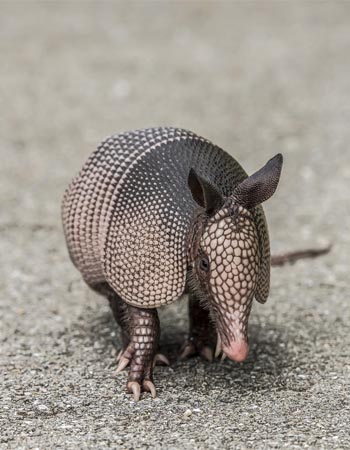
First, a quick history: According to the Scientific American, armadillos were first seen in Texas in the 1880s, and then Florida in the 1920s—and they have been moving farther north ever since. But the pace of that migration has sped up in the past couple of decades or so. A brief timeline illustrates the rapid expansion of their range.
- 1970s: Georgia resident Hans Neuhauser begins tracking the nine-banded armadillo when he first sees them in Glynn County (per Axios).
- 1990s: Armadillo sightings in Tennessee, North Carolina, and Virginia are recorded (per National Geographic).
- 2018: A St. Louis County (Missouri) wildlife technician tells WPSD that the St. Louis area is “on the cusp of the armadillo invasion.”
- 2022: 400 sightings of armadillos are recorded in just 24 hours in Illinois (per the University of Illinois).
Searches for the query “how to get rid of armadillos” reflect the expansion of the armadillo’s territory in two ways. First, interest over time has grown about 45 percent from October 2021 to October 2022.
Second, the evolution of which states are searching for this query the most matches the migration of the animals, with Missouri appearing in the top five for the first time in 2023 per Google data.
Top five states with the most searches for “how to get rid of armadillos” in 2021, 2022, and 2023:
| 2021 | 2022 | 2023 |
| Alabama | Alabama | Louisiana |
| Oklahoma | Arkansas | Alabama |
| Florida | Oklahoma | South Carolina |
| Louisiana | Tennessee | Florida |
| Georgia | South Carolina | Missouri |
BobVila.com readers have their own issues with armadillos too. Reference of an article on how to get rid of armadillos increased a whopping 875 percent in August 2022 compared with August 2021.
While August 2023 didn’t see as much traffic to the same article as the same month the year prior, January 2023 through April 2023 saw more traffic than the same period in 2022. Plainly put, more people searched for and consulted the step-by-step guide on getting rid of armadillos in the winter and early spring months of 2023 than they did in the winter and early spring months of 2022. This indicates that armadillos were a nuisance in months when they wouldn’t typically be active, since they tend to avoid extreme temperatures, according to the South Carolina Department of Natural Resources. In fact, requests for armadillo pest control tripled in Florida and South Carolina from January 2023 through April 2023 compared with the same period the year prior. Finally, requests for armadillo pest control were made in unexpected states such as Kansas in the period of May 2023 through September 2023 indicating that:
- Armadillos are becoming active earlier in the year in their typical habitat in southern states such as Florida and South Carolina.
- Armadillos are moving northward to places where it is warm enough during the late spring and summer months, such as Kansas, and becoming a nuisance there.
With warm climates sustaining armadillo activity, it’s safe to conclude that increasing temperatures—global warming—are a key driver in this species extending its range farther north.
Climate Change to Blame
Climate change is believed to be the primary driver behind armadillos moving farther north and appearing in states where they’ve never been seen before. Experts indicate that a warming planet is causing a domino effect; not only are armadillos able to survive in places that would have been totally unexpected 20 years ago, but their food supply is becoming more available earlier in the year in places north of their typical habitat. According to Yale Climate Connections, armadillos feed primarily on bugs and insects that tend to burrow deep underground when it’s cold, in places where armadillos can’t dig. However, with northern states getting warmer earlier in the year, those same bugs and insects are emerging earlier, with worms and grubs staying closer to the ground’s surface and therefore being easily accessible.
A warmer northern region and a more generous food supply are just two consequences of climate change. In addition to accelerating climate change, humans have also been responsible for eliminating many, if not most, of the armadillo’s natural predators, according to the National Wildlife Federation, allowing armadillo populations to grow unchecked.
Experts are also considering natural expansion as a theory for why armadillos are moving north; this means that as the population grows, males must move farther and farther out to find new territory before breeding with females.
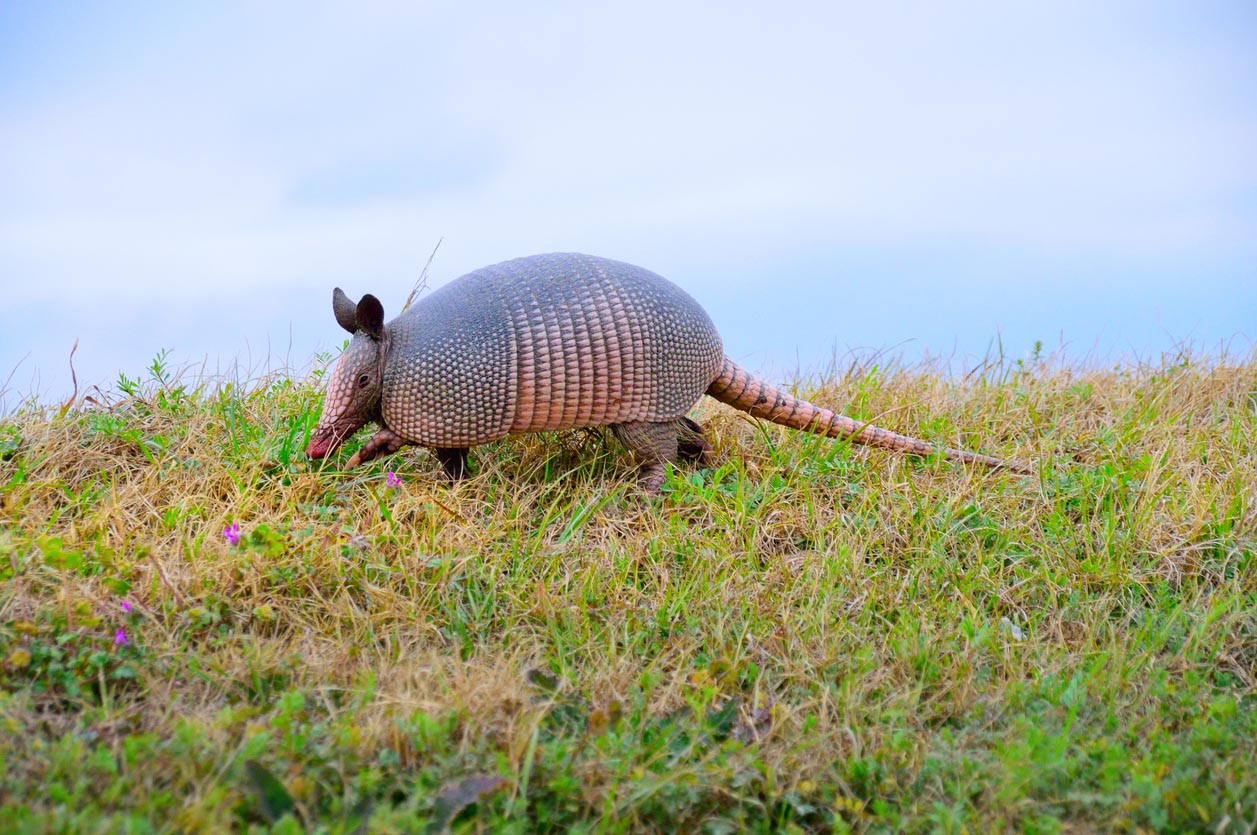
Predicting Armadillo Migration—And Why It Matters
With armadillos moving farther north at a rapid pace, it’s only natural to wonder how far the species will go. One study in the Journal of Biogeography indicates that armadillos may be able to live as far north as Massachusetts as winters become more mild. By and large, many experts agree that this species will eventually extend its reach to parts of New England in the north and California and Washington State in the west by 2080, when temperatures are expected to be around 10 degrees Fahrenheit higher, according to National Geographic. However, it’s also expected that fluctuations in the severity of winters north of South Carolina will also lead to fluctuations in where the armadillo chooses to live. A harsh winter can be enough to push them back into their typical habitat, albeit perhaps not for long.
Of course, as with any non-native species breaching an ecosystem, the armadillo’s migration does not come without consequences, although experts say that it is difficult to predict exactly what those consequences will be. Armadillos dig burrows and dig for food, so they’re much maligned among gardeners and agricultural workers. They’re considered more of a nuisance than a harmful pest. An expansion of their habitat means that more people may be affected by the destruction they can cause.
However, the armadillo’s digging does provide some clear benefits for the environment. According to a 2022 study in Ecology and Evolution, 35 armadillo burrows in Arkansas provided a home for no fewer than 19 mammal species and 40 bird species. Many experts also believe that the armadillo can provide effective natural pest control and make a meal out of the most destructive of agricultural pests, such as the Asian jumping worm.
Armadillos: What You Need to Know
Homeowners across the Southwest have been dealing with armadillo damage for over a century. But for those living in states where this pest is a newcomer, signs of armadillo activity may not be so obvious. The most common problem caused by armadillos is yard damage. Armadillos primarily subsist on insects such as beetles and grubs, using their sharp claws to search the soil for prey. This often leads them to trample and rip up lawns, vegetable gardens, and flower beds, leaving a series of small holes in the soil. Perhaps even more destructive is their burrowing behavior—when armadillos prepare to give birth they create dens, often under homes, garages, and sheds. According to the University of Missouri, these burrows can be up to 15 feet long and are notorious for causing damage to foundations as well as plumbing and electrical wires buried near the home.
Additionally, armadillos can be carriers of Mycobacterium leprae, which is the bacterium that causes leprosy in humans, and one study from the Emerging Pathogens Institute of the University of Florida estimates that 15 to 20 percent of armadillos are carriers. Leprosy, sometimes referred to as Hansen’s disease, is an infectious disease that primarily affects the skin and nervous system. A 2011 study published in the New England Journal of Medicine found a strong correlation between leprosy cases in the southern U.S. and regions with nine-banded armadillo populations; the same strain of M. leprae was found in wild armadillos and many people with leprosy in the area. While the extent to which armadillos are responsible for spreading disease to humans is still being debated, experts recommend avoiding contact with these animals to reduce the risk of transmission.
Between their destructive tendencies and reputation for carrying disease, armadillos are considered unwelcome guests by most homeowners, and removing them can be desired or even necessary. However, as with most wild animals, DIY removal is not advised. The people who are best equipped and the most skilled at removing armadillos safely and humanely are wildlife control specialists.
How to Get Rid of Armadillos
As more and more homeowners are spotting signs of armadillo activity in their yards, searches for how to get rid of armadillos are on the rise. Because these animals can both burrow and climb, simply putting up a fence may not be sufficient to keep them at bay. These animals also are not particularly intimidated by humans, so trying to scare them off is not likely to be effective.
Lethal methods are not ideal and are typically considered to be a last resort: While armadillos can be a nuisance, they play a huge role in the ecosystem, even in regions where they are not native. Some gardeners even welcome these animals because they eat harmful pests such as beetles, grubs, and termites.
But for those who are not interested in playing host to a family of armadillos, experts often suggest removing any attractants from the yard such as leaf piles, debris from fruit trees, and wood piles so that food sources are more scarce. Some homeowners have also found success with natural and commercial repellents. However, if armadillos have already established burrows on the property, these measures may not convince them to seek shelter elsewhere, and physical removal may be the only option.
While there are humane armadillo traps on the market, attempting to relocate a wild animal without the proper training is risky. Armadillos are not particularly aggressive, but their behavior may become unpredictable if they feel threatened. It’s also worth noting that some states have strict laws around trapping. The safest way to deal with an armadillo problem is to have one of the best wildlife removal services (such as Critter Control and Terminix) remove the animals. Wildlife technicians are trained in trapping and relocating animals with methods that are both safe and humane. They can also implement measures to prevent armadillos from coming back, such as filling burrows and installing in-ground fencing.

